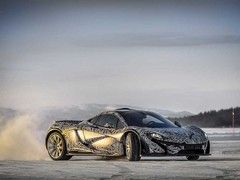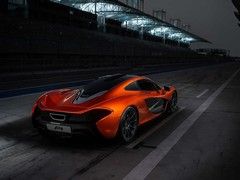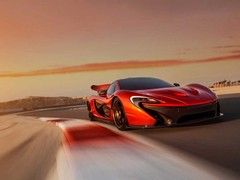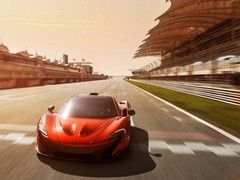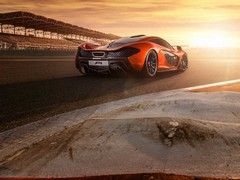McLaren P1 - inside story
Driving impressions and some shameless LaFerrari bashing from the guys inside the P1 project
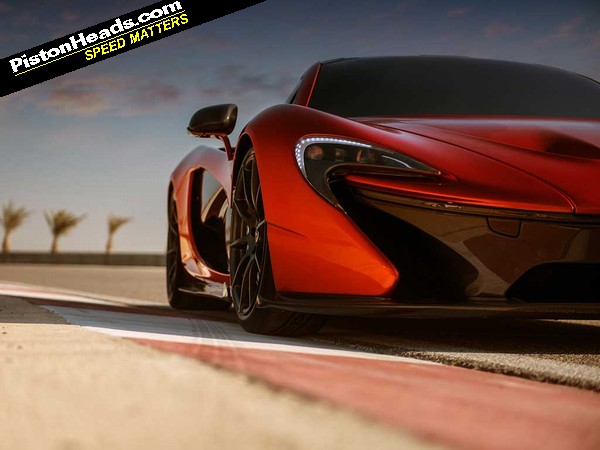
To get a bone of contention out of the way, why does the P1 bother with a hybrid KERS system at all? “To achieve the levels of performance that we wanted, we needed either a big V12 engine or a high degree of technology,” says Greg Levine, Sales and Marketing Director. “Big V12s aren’t practical in this day and agedue to legislation. McLaren should be building supercars of the future and the V12 is of the past. McLaren will never build another car with more than eight cylinders.”
“We wanted to reduce CO2 emissions and deliver a realistic EV range,” adds Chief Designer Dan Parry-Williams, “but the E-Drive system also had to make the car faster.” It adds 180hp to the combustion engine’s 737hp and the instant torque delivery of the electric motor – McLaren refers to IPAS, for Instant Power Assist System – improves throttle response. “It helps give extra torque anytime, anywhere, and comes in instantly,” says Chief Test Driver Chris Goodwin. “It makes a huge difference.”
Something fishy
The hybrid system isn’t just capitulation to increasing environmental pressure, then, it does actually enhance performance. Even so, shedding the best part of 200kg for the sake of 180hp, an EV mode and some tractability seems to be a pretty fair trade. “You’ll understand the technology when you drive the car,” assures Levine.
The most unusual thing in McLaren’s design studio, reckons Senior Designer Rob Melville, is a sailfish painted silver with an orange McLaren tick for an eye. It stands for McLaren’s function over form philosophy and for bio-mimicry, where nature’s forms and its solutions to cutting through air and water are copied in product design. The P1 looks sensational in the carbon – certainly more resolved than in pictures, where the eye tends to be drawn to individual details – and it drips with muscle and aggression. The high rear haunches that tumble into the low rear deck is a particular highlight, but as with every other styling element the outcome was determined by function; a low rear deck helps to reduce drag. Similarly, the nostrils in the bonnet are perfectly spaced to allow a stream of cool air to reach the rooftop intake.
Transformers: GT cars in disguise
The active aero is capable of producing either 600kg of downforce at 160mph or less drag than a 12C, depending on mode. The innovative four-chamber dampers give individual control of roll stiffness, ride height, spring rate and damping and the brakes – developed with McLaren’s Formula 1 partner Akebono – use a new type of carbon material that can absorb 50 per cent more energy through the contact patch between disc and pad than even the 12C’s brakes. In all of these areas the P1 exploits new technologies and pioneers solutions to the increasingly mutually incompatible problem of creating the world’s best driver’s car on road and track.
The P1’s circuit performance is best delivered in Race mode and it’s this that gives the P1 its duality, claims McLaren. To give an idea of how focused Race mode is compared to the default state, consider that it takes 40 seconds to engage. In that time, the car lowers by 50mm, roll stiffness increases by 350 per cent and the effective spring rate doubles. The vast rear wing extends by 300mm and leans a further 29 degrees into the oncoming air. It’s not so much a different mode as total metamorphosis. “There’s a massive change when you switch to Race,” reckons Goodwin. “It becomes extremely responsive.”
There’s a steely sense of confidence within McLaren that is has managed to create a useable, comfortable road car that is inclusive of a wide range of driving abilities. “I know how an F1 world champion drives and I know how a customer drives,” says Goodwin. “We’ve had to develop a car that is accessible to both, so we’ve got sophisticated traction and stability control systems to help an inexperienced driver drive it quickly.”
Psyche up
That level of inclusivity hasn’t come at the expense of outright performance, however, for even Goodwin is stretched by the P1: “When I get into one of our F1 cars, I have to really think about what I’m doing because everything happens so fast, whereas I just jump into a GT racing car and go. In the P1, I have to really think about it.
“The car is limited by having to run road legal tyres. These Pirellis perform closer to a racing slick than anything else out there, but on slicks the P1 would be quicker than a GT car. In Normal mode, the chassis balance is understeer to neutral at the limit. In Sport, Track and Race it becomes more agile and lively. The car will drift with the systems off and it will slide progressively and controllably in Race mode. There’s a useable window of rear aero so it doesn’t drop off with a bit of yaw angle.
“We don’t rely on our F1 drivers for development because they’ve got their own job to do, but they are a useful reference point. Jenson Button has driven the car and he will drive it again. Having an F1 champion’s feedback is good, but it’s no more important than a customer’s feedback.”
About that Ferrari…
If McLaren is confident in the P1’s dynamic ability, it’s utterly convinced it’ll have the better of its rivals. “Porsche doesn’t have a chance of selling918 units,” says a bullish Levine. “If the P1 was in a class of one, we’d still only build 375 because you need the exclusivity.
“When I first saw the figures for LaFerrari I was concerned because it has more power and it’s lighter. But when I saw the car I was relieved because it doesn’t have an EV mode and its active aero isn’t as advanced as the P1’s. It will be compromised either on road or track. It won’t match our car on the circuit.”
That, then, is McLaren’s hand. Don’t expect Porsche or Ferrari to fold.
Check out Perez driving the P1 here.
Gassing Station | General Gassing | Top of Page | What's New | My Stuff

